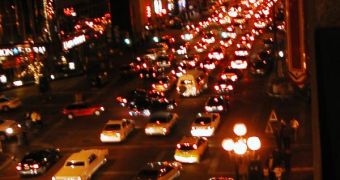You're driving calmly towards home in your newly bought fancy ride and all of sudden disaster! Rush hour captures you again in its merciless claws. But if you were to go all the way to the front of the column of cars, you might notice something rather surprising. There is nothing holding back the flow of cars, no construction work, no accidents, yet nobody seems to be going anywhere. The answer is simple as pie, there are simply too many cars on the asphalt.
The mystery has been solved through a series of computer simulations showing that, in real life, traffic jams can be determined by a simple action such as a single car changing a lane. For example, imagine an infinite column of cars riding on two parallel lanes. All of a sudden, a space clears in one of the two and a driver decides to change the lane. Thus, while the car changes lanes both drivers riding behind the respective car would slightly hit the brakes to reduce the speed in order to avoid a possible accident. The drivers behind the two observe the action and slow down a bit more, until after a considerable distance all the cars within the two columns stop.
Researchers from Japan released yesterday what seems to be a model of patterns of how real life traffic takes place in a normal many-particle system. Again, tiny fluctuations in the movements of a single particle was able to bright to a halt the whole particles system, determining a jam in the process. Even the smallest of fluctuations can have a significant impact in the movement of the particles.
On the other hand, Japanese researchers found out that these jams would never occur if drivers would have a little bit of respect towards each other and reserve the required space between vehicles, so that while a fluctuation occurs it would quickly be buffered by space. Once the critical density of the column is reached, basically nothing can be done to prevent a traffic jam.
With the help of 22 cars and a circuit track measuring 230 meters in length, the researchers set to recreate the simulated conditions. While driving with an average speed of 30 kilometers per hour, drivers were able to keep the traffic flowing for a small period of time, before an inevitable speed fluctuation brought the whole column to a series of brief standstills. Nagoya University physicist Yuki Sugiyama recognizes that the amount of vehicles used in the test was small, but it seems to have accurately recreated the situation described by the model and that of real life.
Sugiyama is willing to continue the study with an even larger number of vehicles and lanes. He also suggests that the critical density on the roads could be easily controlled by constructing larger roads and restricting the number of cars entering traffic at one time in order to prevent bottlenecks.

 14 DAY TRIAL //
14 DAY TRIAL //